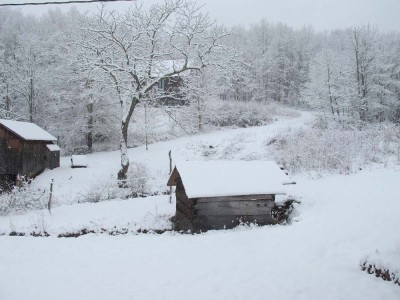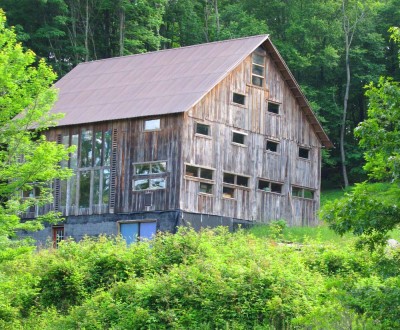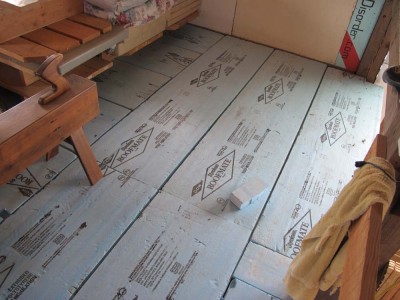Coping with a Cold Shop – Isolation and Insulation
The scene outside on Monday gave me a moment to reflect on the fact that we have made it to the halfway point of our first winter on the homestead. No, the Virginia Highlands are not the arctic climes challenging woodworkers Joshua Klein in Maine, Derek Olsen in Wisconsin, much less Dan or Jonathan in Alaska, but it does get cold here. Certainly, much colder than our past three decades living just south of DC. Here the temperatures, snowfall, and blustery winds are much more in tune with upstate New York, and my pal Mike and I frequently compare notes on the subject; we get pretty much the exact same weather, just three days apart. Near and sub-zero temperatures and wind chills are common. I don’t care where you are from, -7 degrees with 40 mph winds like we had three weeks ago is cold.
In part I have learned about the coping with cold, but more realistically I have been reminded of dealing with it. Sure, I grew up in Minnesota, but 1) it was southern Minnesota, the tropical part, and 2) I left there 48 years ago. This short series of blogs will recount those things I’ve learned or remembered about working in the shop in winter, and making it less wintery than it would be otherwise.
The three things that are definitely true for my barn in the mountains, and presumably your shop in whatever cold place you are, is that you need to 1) Isolate, 2) Insulate, and 3) Generate (heat, that is).
1) Isolation
One of the first decisions I reached when configuring the barn over the past many years is that there was no way I would, or could, heat all of it or even much of it. Instead I isolated my own primary studio space, the continuous row of windows on the north end of the barn, was the only space to be fully heated. Even though the outer skin of the barn is 1×12 vertical siding with battens, that was applied over a continuous inner wind barrier.
The windows are all fixed panel thermal units I bought from a building salvage outfit in Toledo, and I spent considerable time tightening all the corners of the room and around the windows. It took a lot of time and several tubes of caulk and cans of foam insulation, but it was definitely worth it.
One of the great (?) things about living in the Allegheny Highlands is that the winds howl with regularity, so any leaks are pretty readily located. On windy days I checked around all the likely locations for air loss, and closed them up.
Another thing I’m thinking about adding to the isolation scheme is to hang extra-long transparent shower curtains about ¾ down the length of the studio, reducing the overall volume that needs to be heated. Once I do that and finish making the fitted thermal doors to the studio it should be plenty cozy.
Insulation
The basement of the barn is insulated from the ground by some R-30 polyisocyanurate foam panels on the outside of the concrete block walls, and several years ago I had the good fortune to come along a construction site where they were throwing out a mountain of R-43 XPS panels from an industrial scale renovation. Naturally, I made several trips with my truck and trailer to scarf up all I could. Now all the walls of my studio are fully insulated with this material (coincidentally perfectly sized to fit into the space left by 4×4 framing), so they are in good shape.
In preparation for winter, I take another stash of the same insulation panels and lay them snugly on the floor of the balcony immediately above my studio, so in effect the walls and ceiling are all insulated with R-43 panels. I’ll probably think about leaving it in place and simply laying ½” plywood on top as the new floor.
The other insulation well worth mentioning is that sheath of insulation I wear. Come wintertime, I routinely wear finely woven inexpensive thermal underwear bottoms from the Vermont Country Store, or flannel lined khakis I got from Cabelas. On top I wear a long sleeved t-shirt, a heavyweight flannel shirt, and sometimes an insulated vest, along with a warm cap. One good thing about losing 100 pounds is that your long-johns are not crowding.
That’s it for Isolation and Insulation. Up next: Generation 1 (Kerosene heaters).






Join the Conversation!